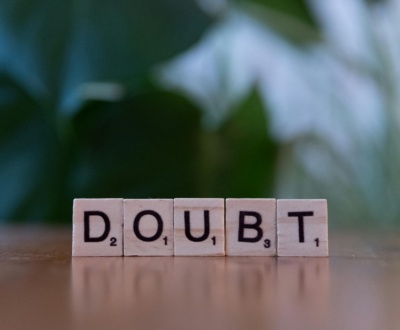Social Media Content Calendar Template: How to Create and Use One
- September 22, 2025
- Uncategorized
Are you a small business owner or content creator struggling to organize your social media posts? Do you find yourself scrambling for last-minute content ideas or forgetting to post consistently? You’re not alone. In fact, one-third of small businesses say a lack of resources is their top marketing challenge, and one-quarter struggle with creating a clear strategy or plan. These challenges often lead to inconsistent posting and missed opportunities to engage your audience. The solution is simpler than you might think: a social media content calendar.

In this article, we’ll explain what a social media content calendar is, why it’s important, and how to create a content calendar template step-by-step. By the end, you’ll know how to plan your posts in advance, maintain a consistent schedule, and even integrate your calendar with your SEO strategy (including a useful fact about SEO and insights for SEO Europe marketing). Plus, we’ve included tips on offering a free content calendar template that you can use in Excel or Google Sheets. Let’s dive in!
What Is a Social Media Content Calendar?
A social media content calendar is essentially a strategic schedule of all your upcoming social media posts. It’s usually organized by date and time, and it can include details like the post text or caption, links or hashtags, any @mentions of other accounts, and the media (images, videos, etc.) that will accompany each post. In other words, it’s a hyper-detailed plan for what content you’ll publish, on which platform, and when.
Your content calendar can take many forms. Some people use a simple spreadsheet or digital calendar, while others use specialized social media management tools that have calendar dashboards. The key is that everything is laid out in one place. This allows you to see at a glance what’s scheduled for next week or even next month, ensuring you always know what’s coming up.
Why use a content calendar? Without one, it’s easy to fall into reactive posting – scrambling to come up with something to post each day. A content calendar shifts you into proactive planning. It helps you align your posts with important dates (like holidays or product launches), maintain a consistent voice, and avoid the last-minute stress of “What should I post today?”
Why You Need a Social Media Content Calendar
Creating and using a social media content calendar has many benefits, especially for busy entrepreneurs and creators:
- Consistency and Better Engagement: “Creating a social media content calendar makes it easier to post consistently and on time, eliminating the stress of coming up with content ideas on the fly,” as one marketing expert notes. The more consistently you post, the more you can build and maintain an engaged audience. Rather than sporadic updates, a steady posting rhythm keeps your followers interested and growing over time. Consistency also ensures your brand stays active and visible on social channels.
- Time Savings and Less Stress: Planning posts ahead of time saves you from the daily scramble. You can batch-create content when you’re feeling inspired, line it up on your calendar, and then focus on running your business the rest of the week. A social media calendar helps widen your bandwidth by keeping you organized. No more scrambling for ideas every day – you’ll have a bank of prepared posts ready to go.
- Maintain Quality and Brand Voice: With a calendar, you have time to craft better content. You can double-check captions for typos, ensure graphics or videos are on-brand, and get any necessary approvals ahead of time. This proactive approach protects your brand’s reputation – you’re far less likely to make mistakes or post something off-brand when you’ve reviewed it in advance. Scheduling content also helps keep your brand voice consistent across posts, since you can plan messaging in a cohesive way rather than posting ad-hoc.
- Align with Goals and Campaigns: A content calendar isn’t just about dates – it’s about strategy. By mapping your posts, you can ensure they tie into your broader marketing goals. For example, if you’re launching a new product or promoting an event, you can schedule supporting social posts at the right times. The calendar gives you a “bird’s eye view” of your content strategy, so you can spot gaps or overlaps and align posts with business objectives. No more missing an opportunity because you forgot to post – your calendar has it all laid out.
- Collaboration and Planning: If you work with a team (or even just a part-time designer or copywriter), a calendar is a central hub that everyone can reference. It streamlines collaboration by showing who is responsible for what and when. Everyone involved can see upcoming content, deadlines for creating graphics or writing copy, and any launch dates or campaigns. This shared visibility reduces last-minute scrambles and ensures everyone is on the same page. Even if you’re a solo content creator, treating your calendar as a “hub” for your ideas and plans will keep you much more organized.
In short, a social media content calendar is key to a successful social media plan. It saves you time, keeps your content quality high, and allows you to be strategic rather than reactive. Now, let’s get into the how-to part: creating your own content calendar template.
How to Create a Social Media Content Calendar Template
Ready to build your content calendar? Just follow these steps to create a template that works for you. You don’t need expensive tools – a simple spreadsheet (or our free template) will do – but you do need to invest some thought and planning. Let’s go through it:
- Set Clear Goals and Know Your Audience: Start by defining your social media strategy – this is the foundation of your content calendar. Ask yourself: Why are you on social media, and what do you want to achieve? Your goals might be increasing brand awareness, driving traffic to your website, generating leads, or building a community. Set S.M.A.R.T. goals (Specific, Measurable, Achievable, Relevant, Time-bound) for your social media efforts. Also, identify your target audience and what content they enjoy. The posts you schedule should align with both your goals and your audience’s interests. Remember, “when building a social media calendar, start with a solid strategy, then plan your posting schedule”. For example, a local bakery’s goal might be to increase foot traffic (goal), targeting local foodies on Instagram and Facebook (audience/platform). With that in mind, the bakery’s calendar will focus on mouthwatering photos, promotions, and customer testimonials that appeal to that audience.
- Choose Your Platforms and Posting Frequency: Next, decide where and how often you will post. Focus on the social networks that make sense for your business – you don’t have to be on every platform. A small business might focus on 2-3 key platforms (e.g., Instagram, Facebook, and LinkedIn) rather than trying to post everywhere. Determine a realistic posting frequency for each one. For instance, you might post on Instagram 5 times a week, Facebook 3 times a week, and LinkedIn once a week. It’s important to be realistic with your time and resources – it’s better to post consistently on a few platforms than to stretch yourself thin and burn out. As you decide frequency, consider what’s ideal for engagement without sacrificing quality. (There’s no hard rule on how much to post, but staying active is important.) Jot down your chosen platforms and how many times per week to post on each – this will guide the structure of your calendar.
- Pick a Calendar Format or Tool: Now it’s time to decide where your content calendar will live. Many small teams and creators use a spreadsheet-based calendar, because it’s simple, flexible, and free. You can use Google Sheets, Excel, or a similar tool to build your template. Alternatively, you could use a dedicated social media management tool (like Hootsuite, Buffer, or Asana’s calendar) if you prefer a more automated dashboard. For now, let’s assume a spreadsheet, since it’s easy to customize. Open up a new sheet or download a free social media calendar template (we offer one as a starting point). Create columns for the key information you want to track for each post. Typical columns include: Date, Day of Week, Time, Platform (which social network), Content or Caption (the text of your post), Image/Video (to note what visual will accompany it), Link or Call-to-Action, Status (draft, scheduled, posted), and any other notes (e.g., “Needs approval” or “Reuse this post from blog”). You can modify the columns to fit your needs. For example, if you target multiple regions, you might have a column for “Geo” or language. If you collaborate with someone, add a column for “Owner” to indicate who’s responsible for the post. The goal is to have all relevant info for each post in one row of your calendar.
- Fill in Important Dates and Events: Begin populating your calendar by marking all the key dates and events relevant to your business and audience. This includes holidays (national holidays, cultural events, and fun social media holidays like #NationalCoffeeDay), product launches, sales or promotions, events (webinars, store events, etc.), and any other important dates. By plotting these first, you ensure your content aligns with real-world events and company initiatives. For instance, a fashion boutique would mark Black Friday, new collection release dates, and perhaps events like Spring Fashion Week. Once these are on your calendar, you can plan content around them (e.g., teasers before a launch, celebratory posts on holidays, special promos on Black Friday). Don’t forget to consider industry-specific dates or trending seasons (like “back to school” season, tax season, summer holidays, etc., depending on your business). Filling these in provides a framework for your content – you’ll see where to focus heavier content versus lighter periods.
- Plan Your Content Themes and Ideas: Now comes the creative part – deciding what to post each day. It helps to establish a content mix or themes for different days. For example, you might decide that on Mondays you’ll share a motivational quote or tip, Wednesdays you’ll do a product feature, Fridays you’ll do something fun or behind-the-scenes. This kind of structure ensures variety and keeps your content from feeling monotonous. Many marketers use rules like the 80/20 rule (80% valuable, engaging content and 20% promotional) or specific rotations of content types (education, inspiration, promotion, etc.). Think about your audience’s interests: perhaps mix how-to tutorials, user-generated content, customer testimonials, industry news, and direct promotions. By planning themes, you make sure you’re not just pushing sales messages all the time (which can turn people off). Jot down a bunch of content ideas under each theme. For example, under “tips” you might list 5-10 different tips you can share on different weeks. Under “promo”, list your key products or services to feature. Under “community posts”, maybe plan shout-outs to customers or answers to FAQs. Having these ideas ready will make filling the calendar much easier.
- Schedule Your Posts on the Calendar: With your themes and ideas in mind, start assigning actual posts to dates on your calendar. Look at your important dates (from step 4) and slot in relevant content around them. Perhaps two weeks before a big event you start hyping it, or on a holiday you post a greeting related to that holiday. Then fill in the days in between with your regular content (from step 5’s ideas). As you schedule, pay attention to balancing your content types. For instance, if you notice you scheduled three product promos in the same week, spread them out and replace one with a more engaging, non-promotional piece. Also consider the best times to post on each platform – if you know, for example, that your Instagram audience is most active in the evenings, schedule your Instagram posts for late afternoon or evening slots. (Pro tip: Many social media tools and studies can guide you on optimal posting times for each platform.) As you fill the calendar, also make note of any assets you need. If next Tuesday’s post is an infographic, do you need to design it or get someone to create it? If Friday’s post is a customer testimonial, do you need to request a quote or photo from that customer? This step is where your content calendar becomes a real plan of action. Each row on the spreadsheet becomes an actionable item: a planned post with its content ready (or a note to create something by a certain date).
- Review, Implement, and Stay Flexible: Once you’ve drafted your content calendar – whether it’s for the next month or quarter – take a step back and review it as a whole. Does it align with your goals set in step 1? Are you hitting the right themes and not neglecting any audience segment? Get feedback from your team if you have one (for example, maybe your sales team knows of a promotion you forgot to include, or a colleague can proofread the content). When you’re satisfied, start implementing it: create the content (write the captions, design the graphics, shoot the videos) needed for each post and schedule them. You can manually post on each day, or use scheduling tools to queue posts in advance. Stay flexible! A content calendar isn’t set in stone – unexpected things will come up. Perhaps a trending topic appears that you want to jump on, or some posts need to shift due to news or changes in your business. That’s okay. You can adjust the calendar as needed – think of it as a living document. The advantage is, with a calendar you can easily see what can be moved to accommodate changes. Finally, as time goes on, track how your posts perform. Note which content got the most engagement or which days had lower interaction. Use that insight to refine future calendars (for example, if your audience loves behind-the-scenes videos, maybe schedule more of those next month).
Example: A sample social media content calendar in spreadsheet format. Each row represents a planned post with columns for the platform (“Channel”), date, time, content topic, post caption, visuals, links, and status. A simple Excel or Google Sheets template like this helps you organize all your social content in one place.
As shown above, a spreadsheet-based content calendar is a handy way to organize everything. You can color-code rows by platform or campaign, use tabs for different months, and easily share it with your team. Feel free to use our free social media calendar template (in Google Sheets or Excel) to get started – it already has common columns set up for you. Just plug in your own content ideas and dates!
How a Content Calendar Can Boost Your SEO
You might be wondering, aside from improving your social media presence, does using a content calendar have any effect on your website or SEO? The answer is yes – an organized social strategy can complement your SEO efforts in several ways. Here’s how:
- Driving Consistent Traffic: By planning your social posts, you can ensure regular sharing of your blog articles, product pages, or other website content on social media. This drives a steady stream of visitors to your site. And an interesting fact about SEO – businesses with active social media profiles can see up to a 31% higher local search ranking on Google. In other words, being active and engaging on social platforms sends positive signals (like backlinks, brand mentions, and user engagement) that indirectly help your search engine visibility. A content calendar helps you stay active consistently, which in turn can contribute to better SEO over time. Additionally, more social shares can mean more chances that others link to your content, which is good for SEO.
- Aligning Content with Keywords: When you plan content in advance, you have the opportunity to incorporate SEO keywords and topics strategically. For example, if you know that next month you want to rank for “summer skincare tips” on your blog, you can schedule social media posts that promote your “summer skincare” blog post, create complementary infographics, or start a related conversation on social. This unified approach reinforces your messaging across channels. If you operate internationally or target specific regions, don’t forget to localize both your social content and your keywords. (For instance, a campaign targeting Spain might use Spanish hashtags and keywords.) When it comes to SEO, Europe is a diverse market – each country has its own languages and trends, meaning your content strategy should be adjusted for each locale. In fact, Google is the dominant search engine across Europe with over 90% market share, so optimizing your content for Google’s preferences is crucial if you’re aiming for European audiences. That might involve tailoring your social posts around region-specific holidays or using keywords that resonate in each country – all of which can be planned out on your content calendar. By integrating these SEO considerations into your calendar, you ensure that your social media efforts support your search visibility in those markets.
- Improving Content Quality (which Search Engines Notice): A content calendar encourages you to produce higher-quality, more relevant content (since you’re planning ahead and not rushing). High-quality content tends to get more engagement – likes, shares, comments – which not only boosts your social presence but can also amplify your SEO. For example, a well-planned infographic or video might earn backlinks from bloggers or get mentioned in articles (the kind of off-page SEO benefit that’s hard to come by if you’re just throwing together posts last-minute). One fact about SEO worth remembering here is that search algorithms increasingly value content that is fresh and engages users. By scheduling regular updates and aligning them with what your audience cares about, you are more likely to create content that people interact with and share. This, in turn, can send positive signals to search engines about your brand’s relevance and authority.
In summary, think of your social media calendar as part of your broader digital marketing strategy. It doesn’t exist in a vacuum. The consistency and thoughtfulness it brings to your social content can support your SEO goals, drive website traffic, and strengthen your brand’s presence both on social platforms and in search results. If your aim is to improve SEO, Europe or worldwide, use your calendar to coordinate content launches with SEO campaigns, ensuring that whenever you publish a new SEO-optimized blog post, you have social posts ready to promote it in multiple markets.
Final Thoughts: Stay Organized and Reap the Rewards
Building a social media content calendar template might take a bit of upfront effort, but it pays off immensely in the long run. You’ll go from chaotic, day-to-day posting to a steady, strategic cadence of content. This not only reduces stress for you as a creator, but also delivers a more professional and engaging experience for your audience. Your followers will notice the consistent value you’re providing, and you’ll likely see better results – more followers, higher engagement, and even more website traffic – because of that consistency.
About us and this blog
We are a digital marketing company with a focus on helping our customers achieve great results across several key areas.
Request a free quote
We offer professional SEO services that help websites increase their organic search score drastically in order to compete for the highest rankings even when it comes to highly competitive keywords.
Subscribe to our newsletter!
More from our blog
See all postsRecent Posts
- From Asia to America: The Powerful SEO Formula Behind China’s Global Rise December 1, 2025
- How Singaporean Companies Succeed in Europe: The Key Role of SEO November 27, 2025
- Why Search Engines Prefer User-Friendly Websites: The Intersection of SEO and UX November 23, 2025








